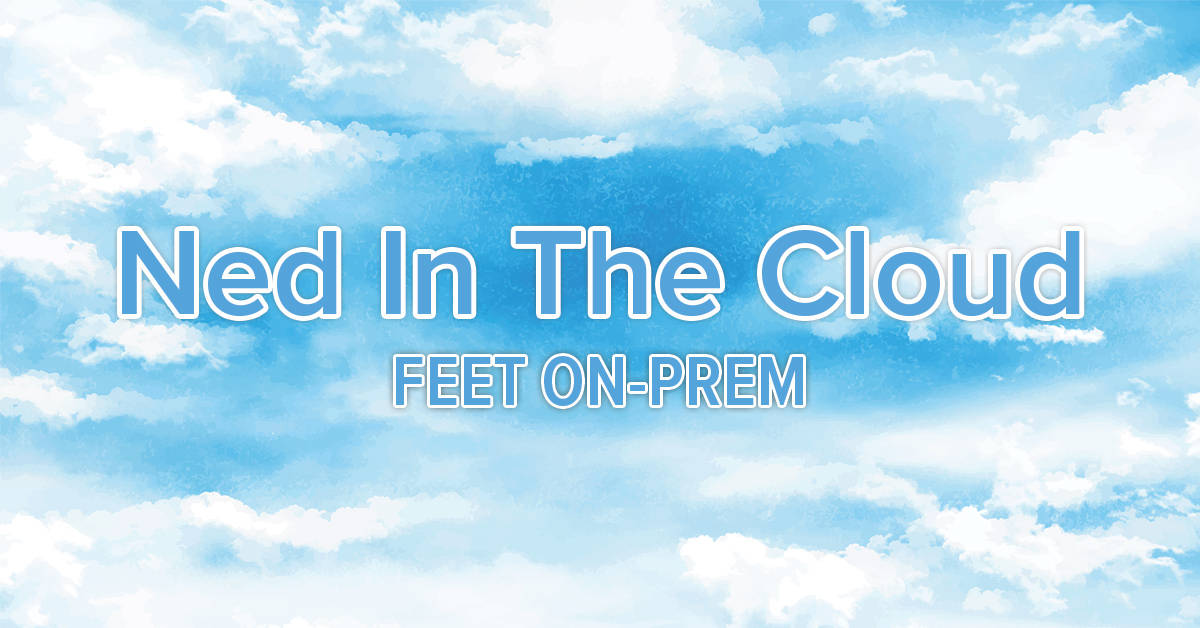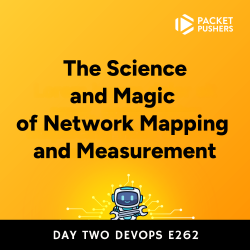


Although I don’t generally subscribe to New Year’s resolutions, I do like to review my professional goals on a regular basis and make sure they align with my overall strategy and vision for my career. I suppose that the beginning of a new year is a useful reminder to check in and see how things are going. In a previous post, I took a look at my goals for 2019 and how I did on achieving those goals. I also mentioned how I needed to revise those goals for 2020 based on my new circumstances, i.e. being self-employed.
Before I can even formulate new goals for the year, I think I need to spend a little time figuring out what the long term vision is for Ned in the Cloud LLC. The vision creates a strategy, the strategy determines goals. The fundamental question is, what is the vision for me?
When I think of a vision or a mission statement, I naturally think of Jerry McGuire. Most people think of “Show me the money!” or “You had me at hello,” but I think of the beginning of the movie where the titular character writes a vision statement/manifesto. It is… not well received. And it becomes the butt of many jokes. I also think of the Weird Al song Mission Statement that successfully lampoons the vapid corporate speak prevalent on most companies’ websites when you hit up the About Us page.
I don’t want to write a mission statement that is vapid and superficial to the point of meaninglessness. I also don’t want to write some earnest and heartfelt manifesto fueled by too much cough syrup and insomnia. A vision should be concise, pragmatic, and actionable. With that in mind, I have come up with this:
Ned in the Cloud’s vision and purpose is to create compelling technical content for IT professionals across multiple mediums based on impactful and emerging technologies.
At one sentence, the statement is certainly concise. I mean, you wouldn’t put it on a coffee mug or t-shirt, but it’s not War & Peace either. It’s also pragmatic. I’m not trying to change the entire world, unlike Microsoft’s vision of “Our mission is to empower every person and organization on the planet to achieve more.” Microsoft is a trillion dollar company, I’m one person. There’s an implied action in the statement too. I am going to create compelling technical content. The content could be video, audio, written, or some new medium that does not yet exist. The medium is less important than the goal of creating something that IT professionals will find compelling and informative.
Now I’ve got a vision, so I can formulate a strategy to achieve that vision. There are three things to pick apart here.
Compelling content doesn’t just happen, it needs to be crafted and tested. I’m sure some people are natural born communicators and entertainers. But the rest of us need to work at it. Creating compelling content means that I need to find a way to improve my skills across a range of skill-sets including communication, presentation, instructional design, narrative arcs, storytelling, etc. Since I am defining a strategy here, I am not so much concerned with how I am going to improve my skills, it’s more about what I need to improve. I think I can identify a few skills that will help me across all mediums:
There are few people that only consume content through a single medium. Folks like to read, listen, and watch. Sometimes they are looking for something interactive, like a hands-on lab. Other times they want to learn about a new topic while commuting to work. Perhaps they want to read a physical book and make notes in the margins. Creating content in a single way, on a single medium is simply not going to work. But I cannot be master of all mediums, so I need to be strategic about what media channels I want to pursue. This one is fairly simple since I already create content, but of course there is room for improvement.
The landscape of technology is ever evolving. New applications, services, and products are constantly being introduced. I cannot possibly cover all of the new developments, so I need to be strategic about which topics I focus on for my content. They need to be impactful, meaning that the topic/product/solution makes an actual difference in the life of the IT practitioner.
It’s hard to pin down exactly what makes a given technology impactful, but I guess I know it when I see it. I suppose I don’t want to focus on something that is a niche product with a limited audience. An edge application designed for the medical industry is probably too specific for me and not impactful for IT practitioners on the whole. The edge platform that hosts the medical application - whether its Kubernetes, VMware, or something else - is of more interest to me, and probably to most IT practitioners.
I got into this technology racket to play with cutting edge solutions, not to upgrade the same old application for the umpteenth time. I think people are going to find more value in content that addresses new and emerging solutions and examines how they might actually fit into the life of an IT practitioner. For that reason, I need to stay current with what is coming down the pike and take time to talk to industry leaders and startups who are producing the innovative technology today that will become the standard tomorrow.
My goals for 2020 should be directly informed by the main points of my strategy. I need to find achievable goals that align with creating compelling content across multiple mediums on impactful and emerging technologies. This post is probably long enough already, and I need to have a good think about what my goals might be. In my next post, I will share what goals I have come up with and how I plan to achieve them.
July 1, 2025

On HashiCorp, IBM, and Acceptance
March 3, 2025

The Science and Magic of Network Mapping and Measurement
January 9, 2025

January 2, 2025
